It turns out that escaping reality and harsh truths of it is not a new phenomenon at all; it is as old as society itself but no one escaped the grim, gruesome and gray daily life in a more imaginative, whimsical and colourful way than Victorians and they sure had a lot to escape from.
 John Anster Fitzgerald, Fairy Hordes Attacking a Bat, c 1860
John Anster Fitzgerald, Fairy Hordes Attacking a Bat, c 1860
Fairy art in the Victorian era developed directly as a result of all the realism that was going on at the time; Industrialisation, child labour, poor living conditions, poverty and prostitution, Positivism, science and Darwinian theories, invention of photography, add to all that the climate of restrictions and (fake) morality and it was just too much for any normal individual to process. Jeremy Mass, the author of the book “Victorian Fairy Painting” (1997) recognised the genre as being reactionary rather than revolutionary. “No other type of painting concentrates so many of the opposing elements of the Victorian psyche: the desire to escape the drear hardships of daily existence; the stirrings of new attitudes toward sex, stifled by religious dogma; a passion for the unseen; the birth of psychoanalysis; the latent revulsion against the exactitude of the new invention of photography.” Dionysian energies need an outlet, and too much Apollonian clarity and ratio cripples the imagination. The sea of reason and harsh truths was overwhelming and the imagination had to find its way in the arts and in people’s life. Dreams, laudanum, local legends and mythology, Shakespeare, and Victorian fairy scenes were born.
While writers such as Charles Dickens chose to write about the horrible conditions, thieves, orphans and the poor, other artists chose to dip their quills and brushes into the colour of fairies and dreams and see where this new genre can take them. Through the fairy and fantasy genre they could express the inexpressible; a fairy isn’t a woman so a nude fairy in a painting isn’t really a nude, as is the case with Paton’s painting “The Quarrel of Titania and Oberon” (1849) that Queen Victoria loved and admired. John Anster Fitzgerald, mostly self-taught and no stranger to opium dens, was one such artist who provided an escape for Victorians through his whimsical paintings filled with strange looking and often grotesque tiny creatures, half-mythical half-imaginary, birds, bats, fairies and flowers. These paintings, full of details and painted in vibrant colours, appear very innocent and childlike at first glance, but their whimsicality was fueled by laudanum and chloral; Victorian drugs of the moment. He was also known as “Fairy Fitzgerald” to his friends because he painted the fairy world so obsessively, and in my opinion, the most beautifully. I prefer his work over the similar works made by other fairy painters who created at the same time such as Richard Dadd and Sir Joseph Noel Paton. Sometimes the titles of Fitzgerald’s paintings alone give me a thrill, “Fairy Hordes Attacking a Bat”, for example.

John Anster Fitzgerald (1819-1906), The Stuff Dreams are Made of, 1864
In Fairy Fitzgerald’s paintings, flowers, leaves and mushrooms seem large in comparison with the small fairies who bodies have luminous glow and strange attire. Dense with details and rich with colour, these paintings were really made to be gazed at for a long time, preferably right before bedtime so all these cheerful and surreal scenes can blend into ones dreams just like in the painting bellow called “The Stuff Dreams are Made of” where the sleeping girl is dreaming of her real or imagined beloved but all of a sudden these strange creatures crash the dream like uninvited party guests. The also surround her bed and play all sorts of instruments, but her rosy cheeks and closed eyes speak of undisturbed sleep.
In another painting, “Nightmare”, a similar young Victorian girl is having a nightmare, tossing and turning in her bed all because the strange beings from the fairy lands have visited her sleep, which brings to mind Fusseli’s The Nightmare painted in times when the Gothic wave swept European art in the last quarter of eighteenth century. In yet another painting, “The Artist’s Dream”, now it is the artist himself who is having strange dreams whilst dreaming about a painting a portrait. Dreams and reality mingle in these artworks and the fantasy finds a way to enter the everyday life, no matter how narrow the path for dream may be. These dream-works are often seen as portrayals of his laudanum-induced hallucinations and they just might be that, but how fun to imagine that these things go on while we are asleep.
These paintings were made to be gazed at and daydreaming over so tune in to these vibrant sparkling colours and drop out of the boring real world.

John Anster Fitzgerald (1819-1906), Nightmare, c 1860s
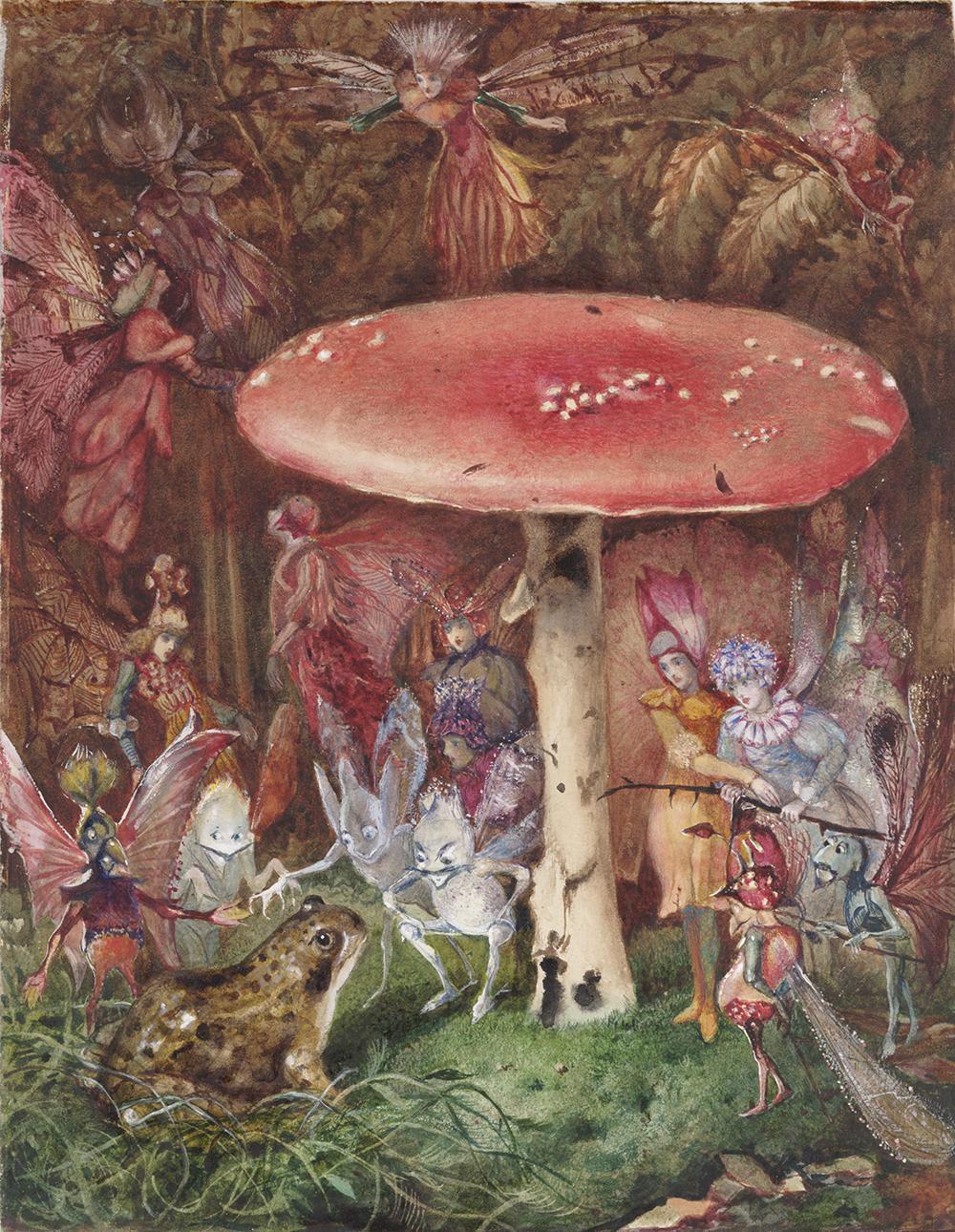
John Anster Christian Fitzgerald, The Intruder, 1865
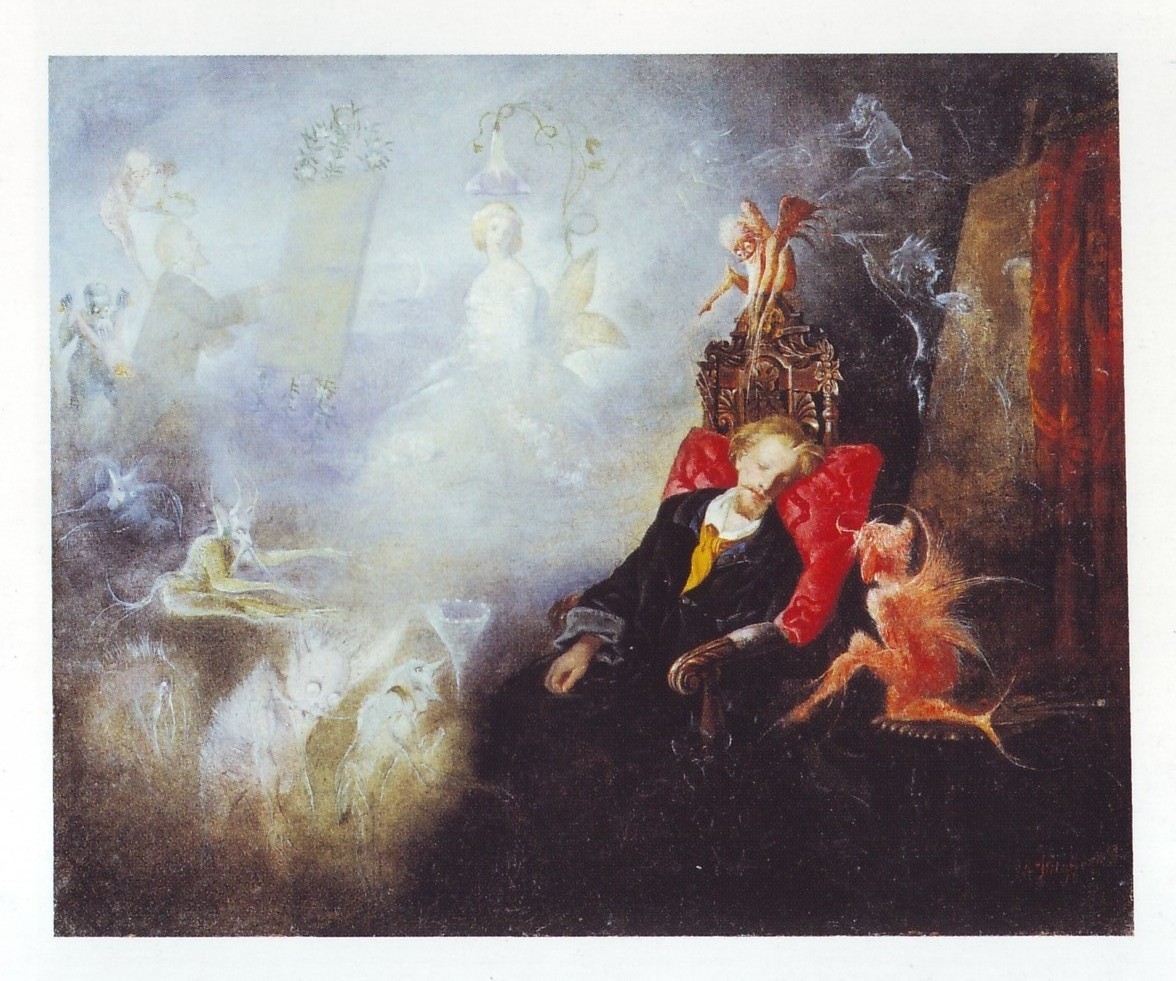
John Anster Christian Fitzgerald, The Artist’s Dream, 1857
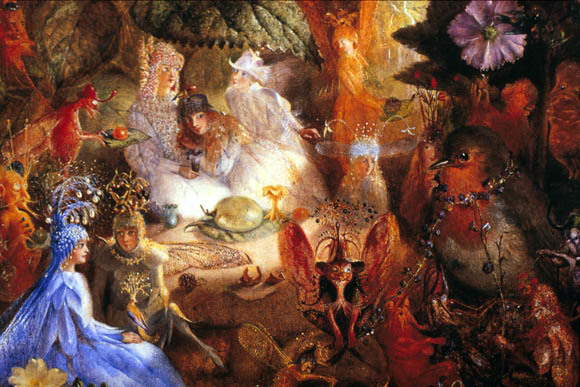
John Anster Fitzgerald, The Captive Robin, 1864
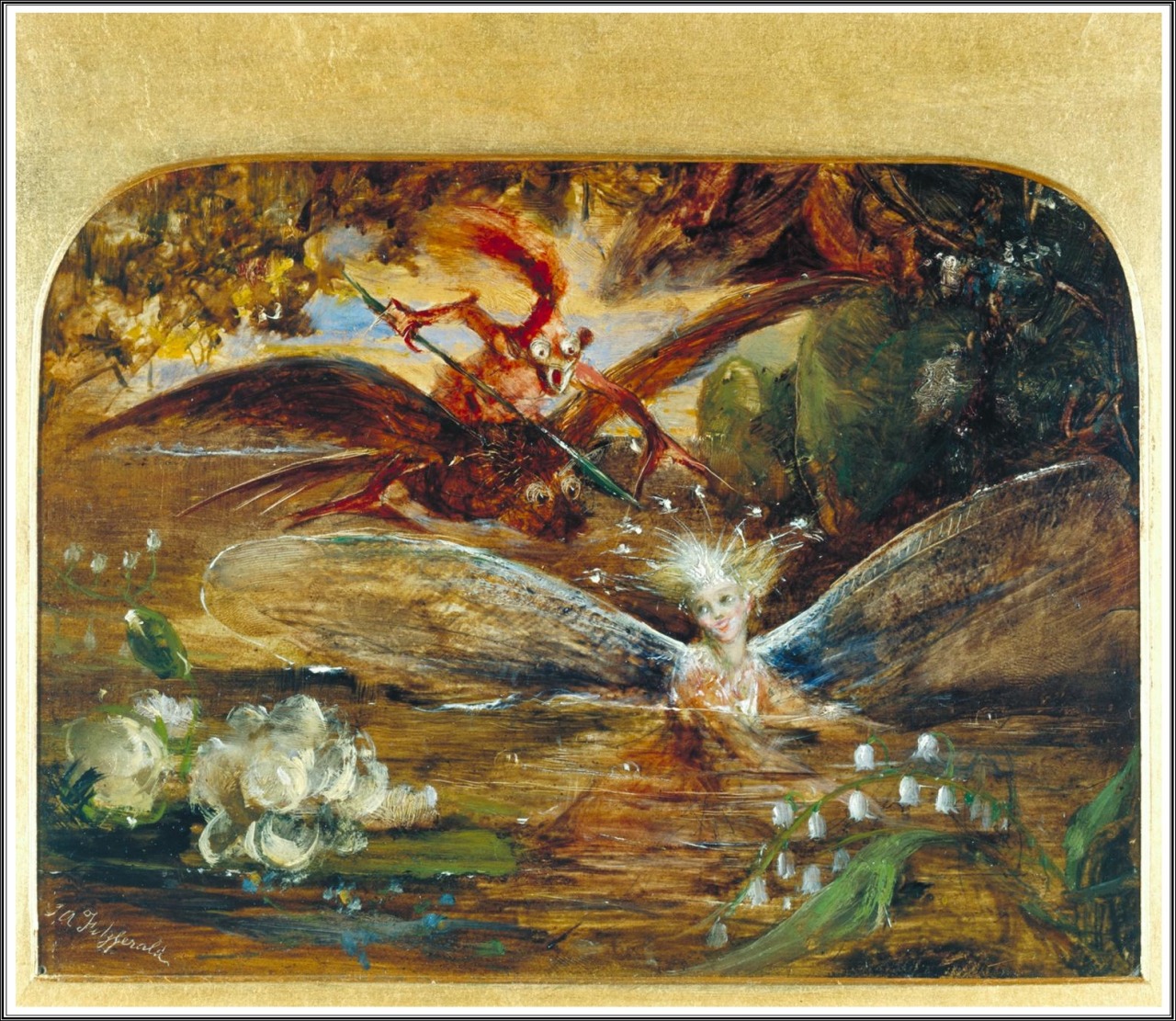
John Anster Fitzgerald, The Fairy’s Lake, c. 1866
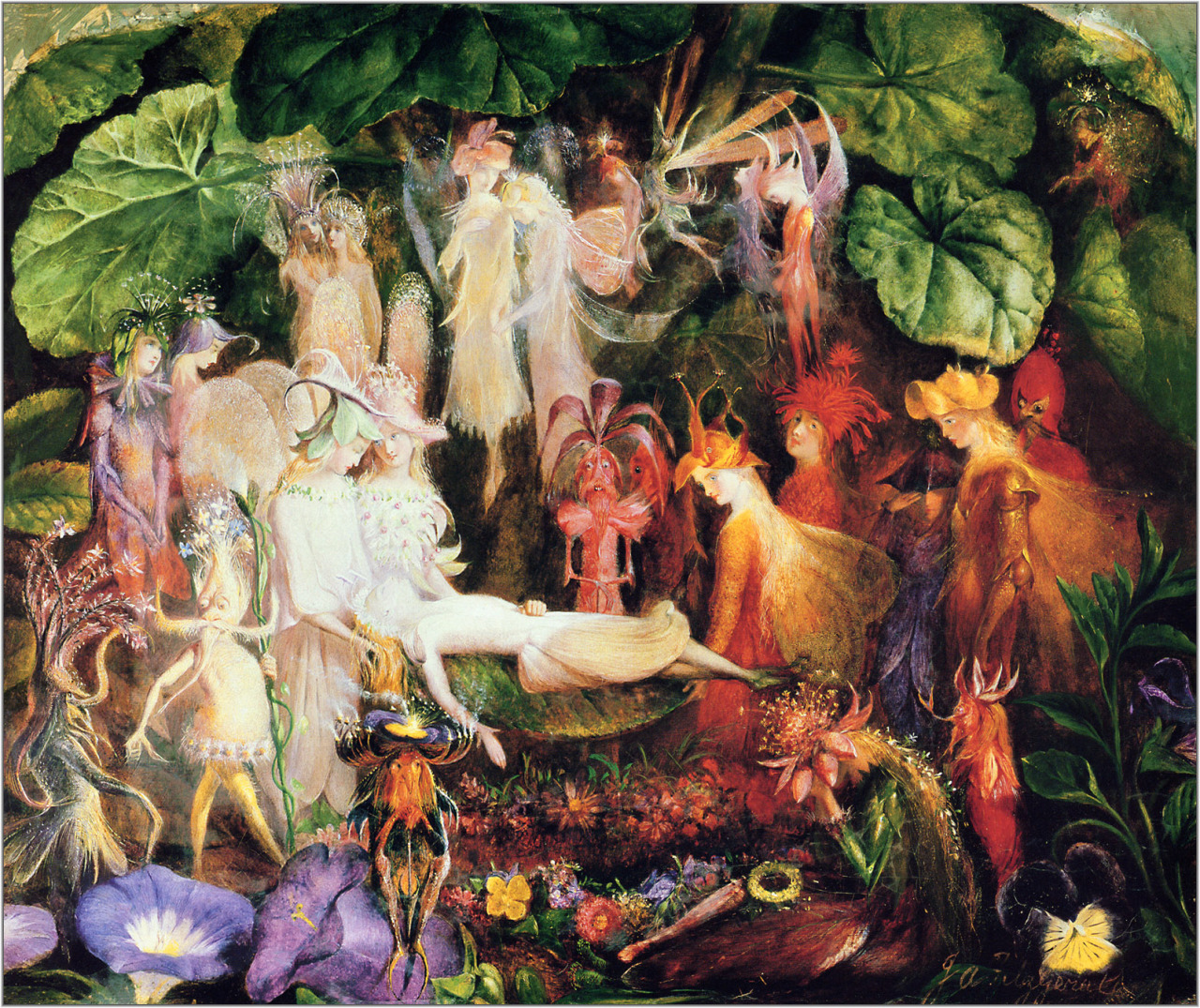
John Anster Fitzgerald, The Faerie’s Funeral, 1860

John Anster Fitzgerald, In Fairy Land, date unknown

John Anster Fitzgerald, Fairy Lovers in a Bird’s Nest watching a White Mouse, 1860s
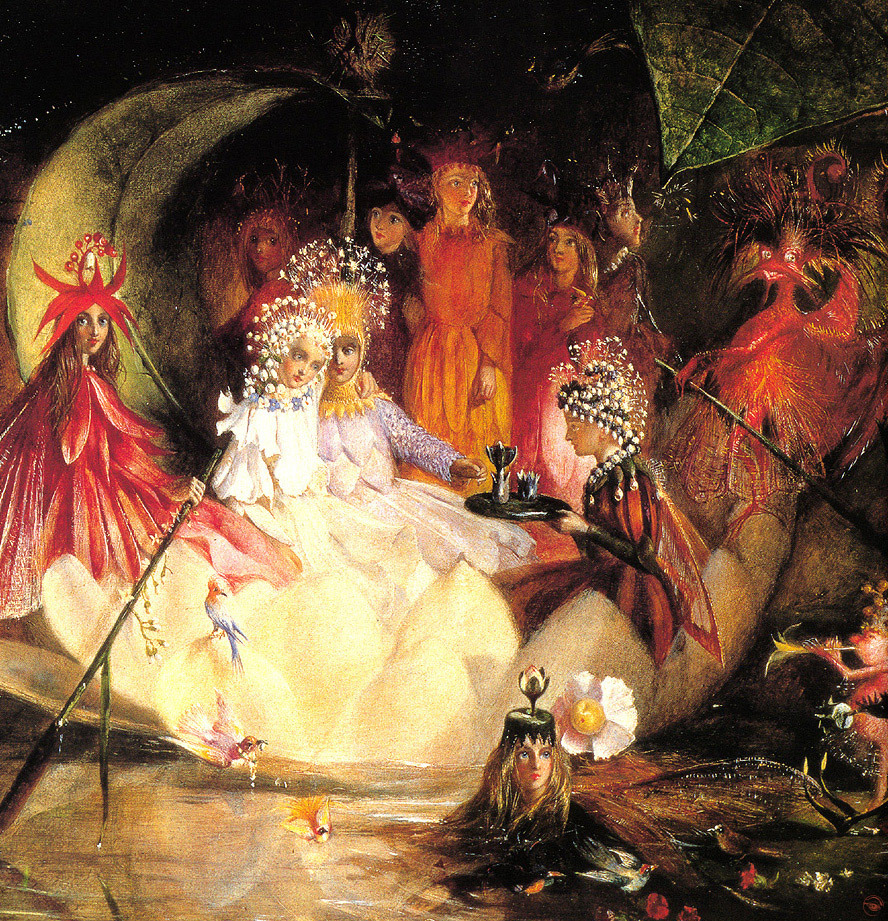
John Anster Fitzgerald, The Marriage of Oberon and Titania, unknown date
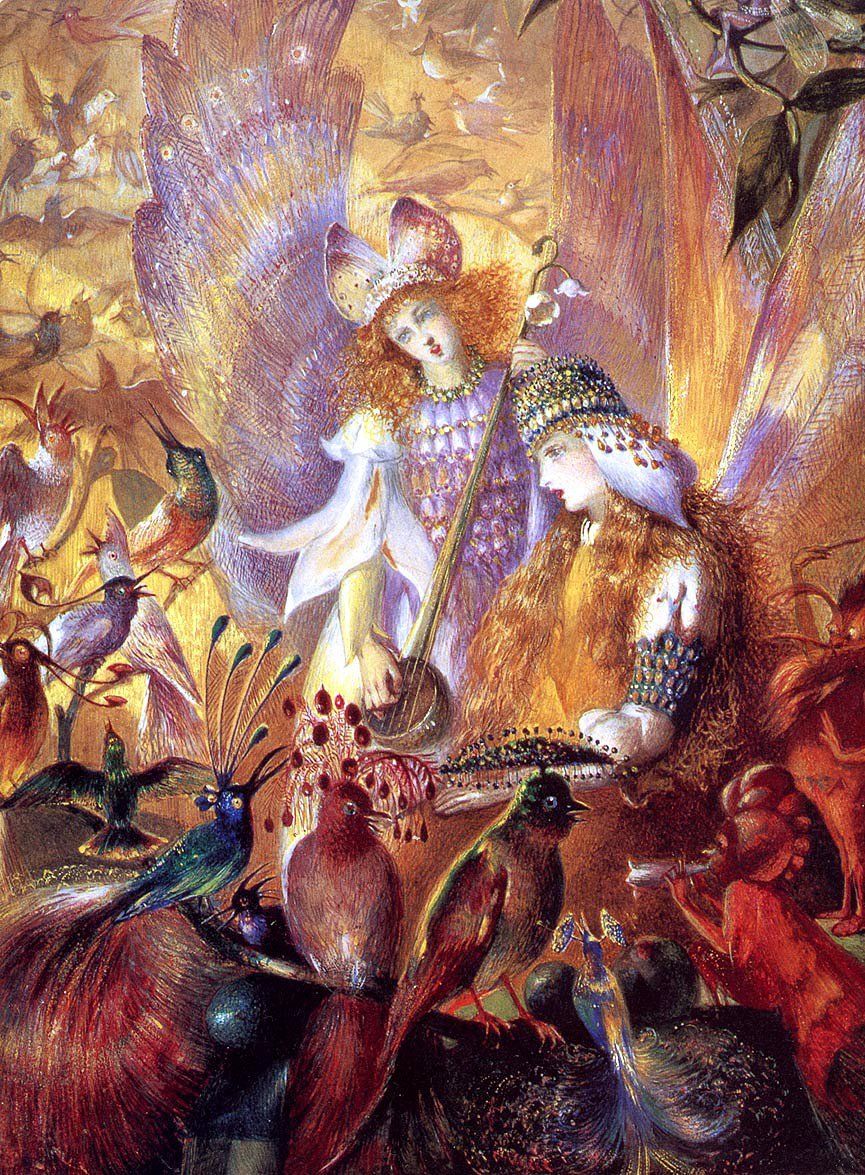
John Anster Christian Fitzgerald, The Concert, c 1860s

John Anster Fitzgerald, Fairies in a bird’s nest, 1860


